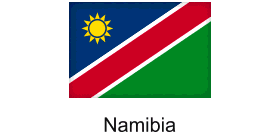 Namibia Air: Government Approves Name for New National Carrier, Signaling Aviation Revival
Namibia Air: Government Approves Name for New National Carrier, Signaling Aviation Revival
Namibia’s ambitions to reassert itself on Africa’s aviation map have gained fresh momentum, as the government officially designates “Namibia Air (Pty) Ltd” as the name of its soon-to-be-launched national airline. This key decision, approved by Cabinet in Windhoek, marks a pivotal stage in the country’s efforts to rebuild a state-owned carrier following the liquidation of Air Namibia in February 2021.
The creation of Namibia Air is more than a rebranding exercise—it’s a strategic move that aims to restore critical connectivity for the country, support tourism growth, and stimulate broader economic development. The government’s announcement comes as the project enters a new phase, with plans underway for a national logo competition and the first operational milestones being set for the upcoming financial year.
For Namibia’s travel sector, the return of a national airline signals renewed opportunities for inbound tourism, business travel, and regional integration. The absence of Air Namibia left a notable gap in the country’s air transport landscape, reducing direct flight options and limiting the growth potential for secondary cities and key tourism destinations. Namibia Air is expected to address these challenges by building a network that connects Windhoek and other urban centres to major African hubs and potentially select intercontinental points.
This revival is timely, as African aviation continues to evolve rapidly in response to shifting passenger demand and increased competition. Governments across the continent are rethinking the role of national carriers—not only as flag-bearers but as engines for economic diversification, job creation, and enhanced global visibility. Namibia’s approach, with a focus on strategic branding and stakeholder engagement from the outset, signals its intent to create a resilient, customer-oriented airline that can compete regionally and internationally.
The launch of a national logo competition further demonstrates the government’s desire to ensure broad public participation and a sense of ownership in the new airline’s identity. By inviting Namibians to contribute to the visual branding of Namibia Air, the authorities are fostering a spirit of unity and pride that could underpin the carrier’s success. This inclusive approach resonates with trends seen elsewhere in Africa, where community engagement is being leveraged to build strong, authentic aviation brands.
As Namibia Air moves toward its operational debut, the industry’s focus will shift to the practical steps required to establish a modern, efficient carrier. This includes fleet selection, route development, recruitment, and the formation of partnerships with both African and international airlines. The government’s commitment to setting clear milestones for the next financial year is a positive sign that implementation will be closely managed and transparent.
For the wider sub-Saharan African industry, Namibia’s journey offers valuable lessons on resilience and reinvention. The rapid changes witnessed in recent years highlight the importance of adaptability, innovation, and collaboration in building sustainable air transport networks. Namibia Air’s emergence will not only restore a vital link in Southern Africa’s aviation ecosystem but could also inspire other markets to pursue smart, strategic investments in national carriers.
With the official naming of Namibia Air now complete, all eyes are on Windhoek as the country prepares to write a new chapter in its aviation history. The return of a state-owned airline is set to play a crucial role in unlocking the country’s tourism, trade, and investment potential—demonstrating once again how a national carrier can serve as a cornerstone for economic growth and regional integration in Africa.
